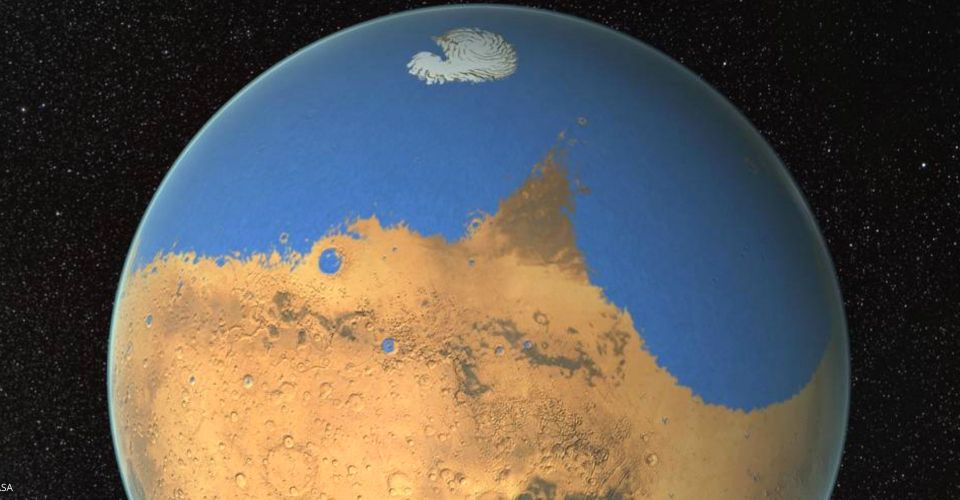Is There Water On Mars?

The red planet Mars has always fascinated scientists. While the planet does not show any signs of life in its current state, researchers are making efforts to discover more about the history of the planet and if it ever had life on it. To sustain life in any form, Mars must have organic elements such as oxygen, carbon, hydrogen, and water. Over the years, NASA has sent five rovers to the planet to examine its surface and its composition.
Most recently, a team of researchers from the US, France, and Sweden has simulated the conditions on Mars with the help of models to show that the planet may have had a huge northern ocean. The study also suggests that Mars had a wet and cold climate. This means that despite having extremely low temperatures, Mars could have sustained liquid water. The model explains that oceans existed on the planet in the presence of ample hydrogen in its atmosphere.
So, is there water on Mars? The answer to this question is complicated. In simple words, yes there is water on Mars, but it is frozen due to extremely low temperatures. In several years of observations, large chunks of ice have been found on the poles of the red planet. Additionally, it is also believed that rocks on the surface of the planet could also have water trapped in them in the form of ice. The Martian atmosphere also contains water in the form of water vapor. However, Mars does not have ample water in its liquid state, as is present on the planet Earth. While studies that were conducted previously did claim that Mars might have liquid water on its surface, a new study published in the Geophysical Research Letters on Jan. 24, 2022 claims that previously claimed water bodies could be volcanic plains. Prevailing conditions such as low temperature, lack of a strong atmosphere, and magnetic field suggest that liquid water is not present on the Martian surface.
Why did Mars lose its water?

Scientists believe that Mars used to have large water bodies, including rivers and lakes. However, billions of years ago, the planet lost its magnetosphere which acts as a protective shield against the radiation of the Sun and keeps the atmosphere in the place. In due course, the solar storms that hit the red planet weakened its atmosphere. Further, extreme climatic conditions resulted in rapid evaporation of water from water bodies on Mars into the atmosphere. Since the planet did not have a strong magnetic field, solar winds wiped away its atmosphere, and along with it, the water vapors in the atmosphere. The Sun’s ultraviolet rays break the water vapor in the upper atmosphere into its constituents, hydrogen, and oxygen. Owing to lesser gravity and its light nature, the hydrogen floats away, into space.
Another explanation behind the massive loss of Martian water comes from the recent observations by the Trace Gas Orbiter that is circling Mars as a part of the European-Russian ExoMars program. It has been found that seasonal changes on the red planet play a major role in the distribution and saturation of water vapor in the atmosphere During the hottest season on Mars, the sun’s rays convert ice on the Martian poles to water vapor. These vapors then rise in the atmosphere, which is supersaturated with nearly 10 to 100 times the amount of water vapor than its temperature should allow. As the atmosphere on Mars is too thin, condensation of these vapors does not occur and they reach the upper atmosphere, from where they escape into space.

















